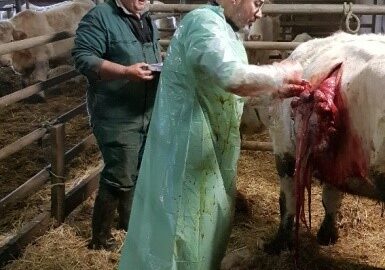Research on very young dairy heifers, changing management, and following their performance at short and medium-term

Auteurs
Résumé
Rearing heifers is a key part of the sustainability of dairy bovine systems farms. This process determines heifers’ health, growth and long-term survival and productivity, with a global objective of achieving an age at first calving of maximal 24 months, with this cut-off being the most cost saving goal. Age at first calving is influenced by several factors, such as calf and heifer health, weight gain, age of puberty… In brief: heifers must grow adequately (and healthy) to attain puberty at an optimal time. Therefore, main goals are avoiding illness, optimizing growth rhythm according to different ages and guaranteeing maximal reproductive efficiency for first pregnancy and calving. Beyond avoiding negative circumstances, promoting positive environments to the heifers since a very early age may contribute to these goals. To help rearing farms improving animal welfare and productivity, we compared the effects of twice- or thrice-daily milk replacer with or without calcium gluconate supplemented in the starter feed on short- and medium-term metabolism, productivity and reproductive performance. Thrice-daily feeding led to better health and reproduction and lower mortality, while gluconate supplementation promoted “catch-up” growth after weaning and led to better health. All these effects of milk replacer involved metabolic changes, and gluconate supplementation dampened the effects of stress on metabolism. Factors affecting more intensively reproductive performance were related to health and heat stress suffered during the first three months of life, while three feedings/day of milk-replacer tended to increase the hazard for first pregnancy at an age of 18 mo. old. Our work demonstrates that environmental, management and health conditions at very early stages of age in dairy calves significantly affect short-term growth and health, and longterm reproductive efficiency a year and a half after, which underlines the importance of working exquisitely at these ages.
D'autres articles
JNGTV 2013 Page 749
Bovins · Infectiologie
Zoonoses . La prévention de la contamination humaine : le point de vue du vétérinaire
Découvrez aussi nos formations
05 janvier 2026
5 jours
Bovin laitier · Bovin viande · Bovins


